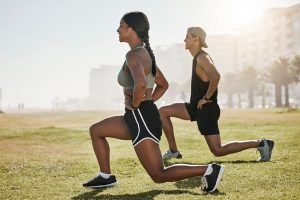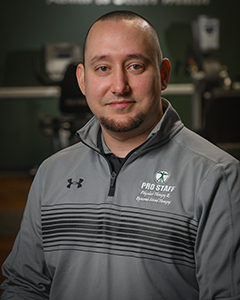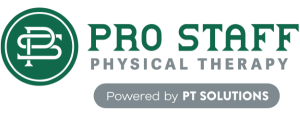4 Simple Stretches That Help Increase Blood Flow

Did you know that incorporating simple stretches into your daily routine can help increase blood flow and promote overall health? Stretching improves flexibility and range of motion and enhances circulation, essential for delivering oxygen and nutrients to your muscles and organs.
Before we delve into the stretches, it’s important to note that stretching should be done safely and within your comfort level. Listening to your body and avoiding overstretching or pushing yourself too far is crucial, as this can lead to injuries. If you have any existing health conditions, chronic injuries, or concerns, it’s advisable to consult with an expert physical therapist before attempting new stretches. In this article, we will explore four simple stretches that can help boost blood flow and keep your body feeling revitalized.
How Does Stretching Improve Blood Flow?
Stretching plays a crucial role in improving blood flow throughout the body. Here are several reasons why stretching can enhance circulation and promote better overall blood flow:
- Improved Circulation: Stretching helps to increase blood flow to the muscles being stretched. As you stretch, the muscle fibers and surrounding tissues expand and relax, allowing blood vessels to dilate and deliver oxygen and nutrients more efficiently. This improved circulation can enhance the delivery of essential substances to the muscles, including oxygen and glucose, while also removing waste products such as carbon dioxide and lactic acid.
- Relaxation of Tension and Compression: Many people experience muscular tension and tightness due to prolonged sitting, sedentary lifestyles, or physical activities. Stretching helps alleviate this tension by lengthening the muscles and reducing compression on blood vessels and nerves. By releasing tight muscles, stretching allows unrestricted blood flow and prevents the development of muscle knots or trigger points that can hinder circulation.
- Stimulation of the Nervous System: Stretching stimulates the body’s nervous system, including sensory receptors in the muscles, tendons, and joints. This activation signals the body to increase blood flow to these areas, promoting better circulation. Additionally, stretching can help activate the parasympathetic nervous system, which promotes relaxation and reduces stress. This state of relaxation can further support healthy blood flow.
- Enhanced Flexibility and Range of Motion: Regular stretching improves flexibility and range of motion in muscles and joints. This increased flexibility allows for more efficient movement and reduces the risk of muscle imbalances or joint restrictions that impede circulation. When muscles and joints can move freely through their full range, blood vessels are less likely to be compressed or restricted, facilitating optimal blood flow.
- Heart Health Benefits: Exercising, particularly dynamic stretching, can improve cardiovascular health. The gentle movements and increased heart rate associated with stretching stimulate blood flow throughout the body, supporting the overall health and function of the cardiovascular system.
It is important to note that while stretching can improve blood flow, it should be combined with other healthy lifestyle practices such as regular exercise, a balanced diet, and maintaining proper hydration. If you have specific health concerns or conditions, it is advisable to consult with a qualified physical therapist for personalized guidance.
What is the Difference Between Dynamic Stretching and Static Stretching?
Dynamic stretching and static stretching are two different approaches to stretching, each with its own characteristics and benefits. Here’s a breakdown of the differences between the two and when each type is more suitable:
- Dynamic Stretching: Dynamic stretching involves moving parts of your body through a full range of motion in a controlled manner. It usually involves active movements that mimic the motions of the activity or sport you’re about to perform. Examples of dynamic stretches include arm circles, walking lunges, and leg swings.
It has the following benefits:
- Involves continuous movement and stretching while in motion.
- Uses controlled and fluid movements.
- Takes muscles and joints through a full range of motion.
- Enhances muscle activation and body awareness.
- Increases heart rate and body temperature.
Suitability: Dynamic stretching is beneficial as a warm-up before physical activity or sports. It helps prepare the body for the specific movements and demands of the upcoming activity. Dynamic stretching improves flexibility, mobility, and coordination while activating the muscles and increasing blood flow. It is commonly used to improve performance, prevent injuries, and enhance athletic abilities.
- Static Stretching: Static stretching involves holding a stretch in a stationary position for a prolonged period, typically around 15-60 seconds. This type of stretching aims to lengthen and relax the targeted muscles. Examples of static stretches include a standing quadriceps stretch, hamstring stretch, or a seated forward bend.
It has the following benefits:
- Involves holding a stretch without movement.
- Focuses on elongating the muscles and increasing flexibility.
- Encourages relaxation and stress reduction.
- It should be performed in a comfortable and controlled manner.
Suitability: Static stretching is best suited for cooling down after physical activity or as part of a separate stretching routine. It helps increase overall flexibility, improve joint range of motion, and promote relaxation. Static stretching is commonly used to maintain and improve flexibility, promote recovery, and reduce muscle soreness. It may also benefit activities that require a large range of motion, such as dance or gymnastics.
It’s important to note that the appropriateness of each type of stretching depends on various factors, including the individual’s goals, specific activity or sport, and personal preferences. In general, dynamic stretching is more suitable as a warm-up before activity, while static stretching is often performed as a separate flexibility routine or after physical exertion.
Some studies suggest that static stretching before high-intensity activities temporarily decreases muscle strength and power output. Therefore, it’s recommended to perform dynamic stretching as a warm-up before intense exercise and reserve static stretching after the activity or during separate flexibility training sessions.
What Are 4 Simple Stretches?
Here are four simple stretches, including two dynamic stretches and two static stretches:
Dynamic Stretches:
- Walking Lunges: Start by standing tall with your feet hip-width apart. Step forward with your right foot, lowering your body into a lunge position. Push off with your right foot and forward your left foot into the next lunge. Continue walking forward, alternating legs. This dynamic stretch helps warm the lower body muscles, improves hip flexibility, and activates the leg muscles.
- Arm Circles: Stand with your feet shoulder-width apart and extend your arms to the sides. Make small circles with your arms, gradually increasing the size of the circles. After a few rotations, reverse the direction. Arm circles help to increase shoulder mobility, warm up the upper body, and improve the range of motion.
Static Stretches:
- Standing Quadriceps Stretch: Stand tall and hold onto a wall or support for balance if needed. Bend your right knee and bring your right foot toward your buttocks, grasping your ankle or shin with your right hand. Gently pull your foot toward your buttocks until you feel a stretch in the front of your thigh. Hold this position for about 30 seconds, then switch sides. This static stretch targets the quadriceps muscles in the front of the thigh and helps improve flexibility.
- Hamstring Stretch: Sit on the floor with your legs extended in front of you. Lean forward from your hips and reach towards your toes. Keep your back straight and avoid rounding your spine. Hold this position for about 30 seconds. You should feel a gentle stretch in the back of your thighs. The hamstring stretch helps increase flexibility and lengthen the muscles in the back of the thighs.
Why Choose Pro Staff for Physical Therapy Needs?
Pro Staff Physical Therapy is an excellent choice for dynamic and static stretching due to its expertise, personalized care, commitment to staying informed, and dedication to evidence-based practice. Their team of highly skilled professionals can provide tailored guidance and support for effective and safe stretching routines. Whether dynamic stretching for warm-up or static stretching for cooldown and flexibility, Pro Staff Physical Therapy ensures proper form, technique, and individualized approaches.
By choosing Pro Staff Physical Therapy, you can have confidence in their commitment to optimizing your physical performance, recovery, and overall well-being through dynamic and static stretching. Book your appointment today!
Pro Staff Institute, LLC, has a network of outpatient physical rehabilitation centers in New Jersey. Pro Staff was founded in 2010 by Frank Pavlisko and Michael Maffucci. Through Frank’s 25 plus years experience in Physical Therapy and Michael’s experience in Management Services, our goal is to exceed customer expectations by providing the highest quality of service in a fun, family, friendly, and encouraging environment.
PRO STAFF LOCATIONS
OFFERING CERTIFIED
HAND THERAPY
Managing Diabetes: The Role of Physical Therapy
Managing Diabetes: The Role of Physical Therapy As of 2024, approximately 38.4 million Americans, or 11.6% of the U.S. population, have diabetes. Of these, 29.7 million cases are diagnosed, while an estimated 8.7 [...]
Staying Active and Injury-Free During Summer Activities
Staying Active and Injury-Free During Summer Activities Summer is a fantastic time to engage in outdoor sports and physical activities. Whether playing soccer, tennis, cycling, or jogging in the park, staying active is [...]
The Importance of Posture: How Proper Alignment Can Prevent Pain and Injury
The Importance of Posture: How Proper Alignment Can Prevent Pain and Injury In today's fast-paced world, where many hours are spent over desks, smartphones, and computers, posture is often neglected. Poor posture can [...]




